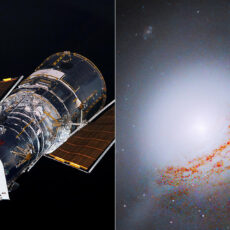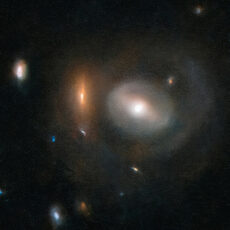
NASA / ESA’s Hubble Space Telescope captured a massive glowing ball of approximately 100 billion stars in the Messier 89 galaxy, which is located 55 million light-years from Earth. M89, an elliptical galaxy, appears to be perfectly spherical, making it an oddity since they typically tend to be elongated ellipsoids.

Charles Messier first discovered Messier 89 in 1781 when he began cataloging astronomical objects after mistaking a a faint object in the sky for Halley’s Comet. He discovered this celestial object was actually the Crab Nebula, prompting him to catalog all of the bright, deep-sky objects that could one day be mistaken for comets. M89 also contins 2,000 globular clusters and was the first galaxy discovered to have an extended envelope, or a larger region of light surrounding it than other elliptical galaxies.
- Feed a passion for science and technology – Kids can learn more about the challenges of space exploration with this LEGO Technic NASA Mars Rover...
- Conduct a test flight – This advanced building kit for kids ages 10 and up includes a buildable toy version of NASA’s Ingenuity helicopter, which...
- AR brings the mission to life – The accompanying augmented reality app experience lets kids dive into the details of the rover and its mission
[Charles Messier’s] methodical observations of the night sky led to the first comprehensive catalog of astronomical objects: the Messier Catalog! Messier 89 holds the record for being the last giant elliptical Messier found, and the most perfectly spherical galaxy in his catalog of 110 objects,” said NASA.








